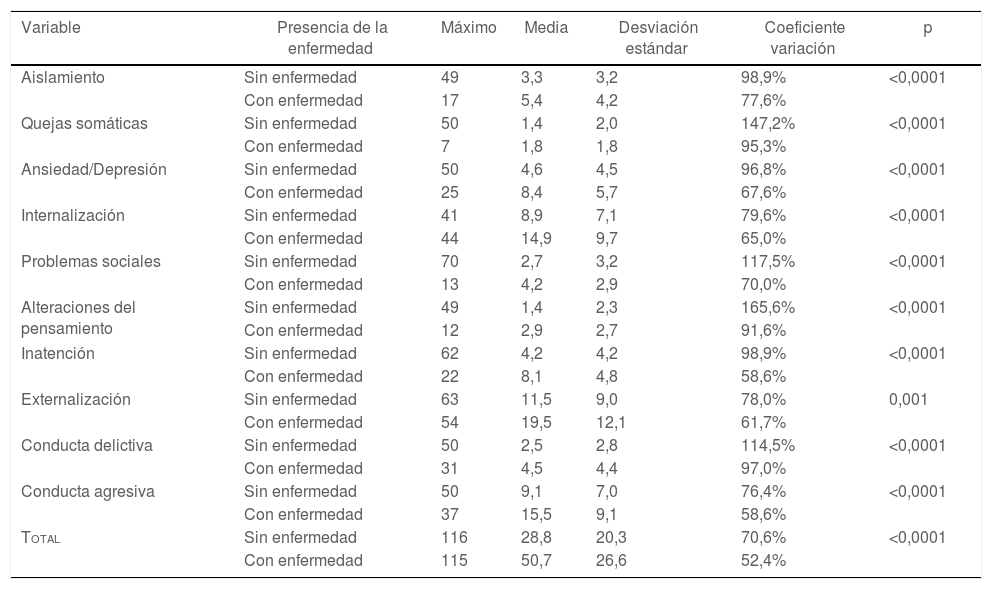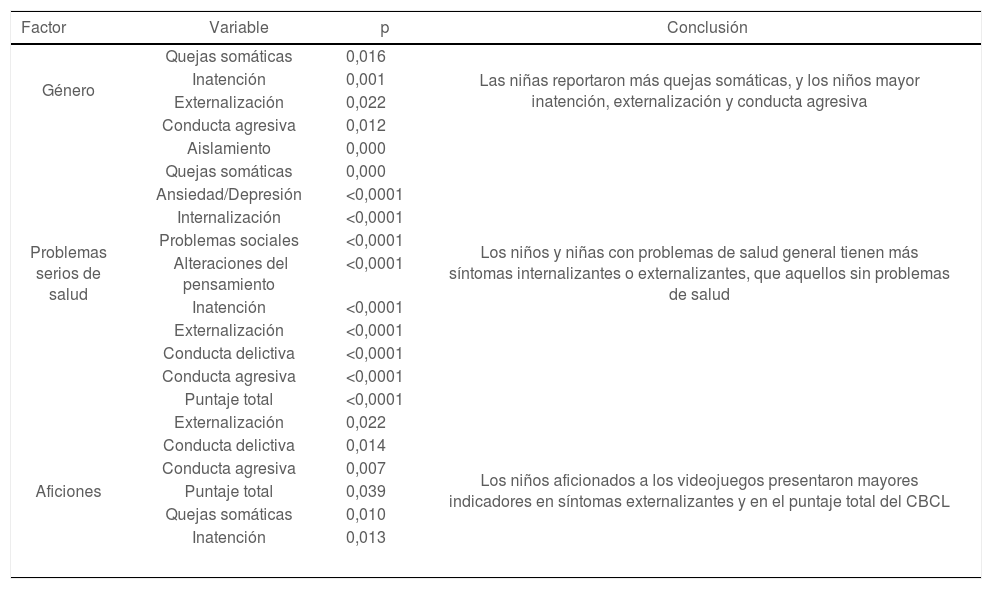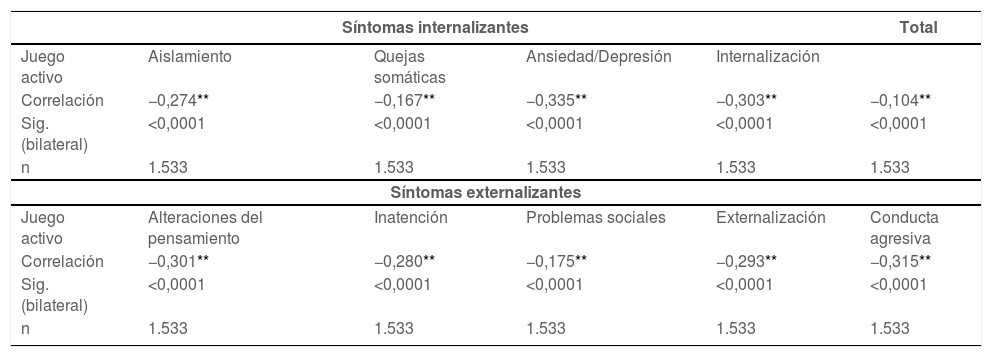Los problemas mentales pediátricos han venido en aumento, especialmente después de la COVID-19, que llevó a que el juego activo fuera reducido. En la niñez y la adolescencia, el juego activo se ha reconocido como un factor protector frente a la psicopatología.
ObjetivoDeterminar la asociación entre el juego y los síntomas internalizantes o externalizantes en niños, niñas y adolescentes.
Material y métodosEstudio observacional analítico transversal, con una muestra de 1.533 niños, niñas y adolescentes, entre 6 y 18años, en la ciudad de Manizales, durante el segundo semestre de 2021. Se aplicó el Child Behavior Checklist 6-18 (CBCL/6-18) y se indagó por aficiones y juego activo, donde se realizaron análisis bivariados.
ResultadosEl 69,4% de los encuestados es aficionado al arte y el 12,0% al deporte. El 46,37% presentó síntomas significativos en el CBCL. Se encontraron correlaciones negativas estadísticamente significativas entre el juego activo y la presencia de síntomas en todos los dominios del CBCL, además de una correlación positiva entre alteraciones en la salud mental y el uso de videojuegos.
ConclusionesEl juego activo constituye un comportamiento relacionado con la salud mental infanto-juvenil, por lo que debe ser indagado y promovido desde los primeros niveles de atención en salud.
Pediatric mental problems have been increasing, especially after COVID-19, which led to reduced active play. In childhood and adolescence, active play has been recognized as a protective factor against psychopathology.
ObjectiveTo determine the association between gambling and internalizing or externalizing symptoms in children and adolescents.
Material and methodsCross-sectional analytical observational study, with a sample of 1533 children and adolescents, between six and 18years of age in the city of Manizales, during the second semester of 2021. The Child Behavior Checklist 6-18 (CBCL/6-18) and inquired about hobbies and active play, where bivariate analyzes were performed.
Results69.4% of those surveyed are fond of art and 12.0% of sports. 46.37% presented significant symptoms in the CBCL. Statistically significant negative correlations were found between active gaming and the presence of symptoms in all CBCL domains, as well as a positive correlation between alterations in mental health and the use of video games.
ConclusionsActive play is a behavior related to child and adolescent mental health, which is why it should be investigated and promoted from the first levels of health care.
Artículo
Comprando el artículo el PDF del mismo podrá ser descargado
Precio 19,34 €
Comprar ahora









